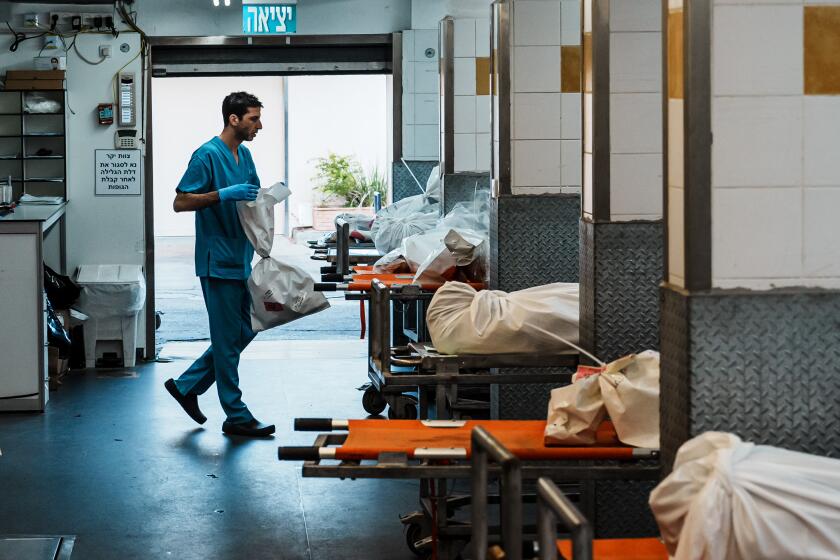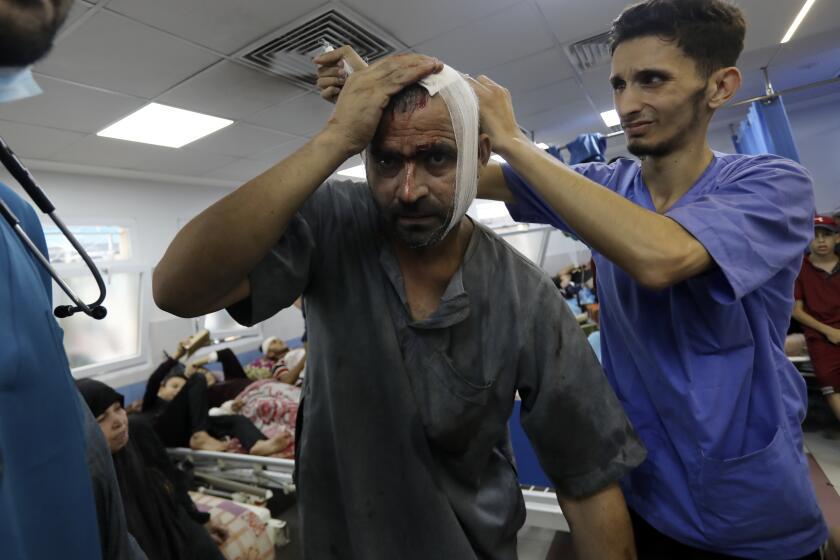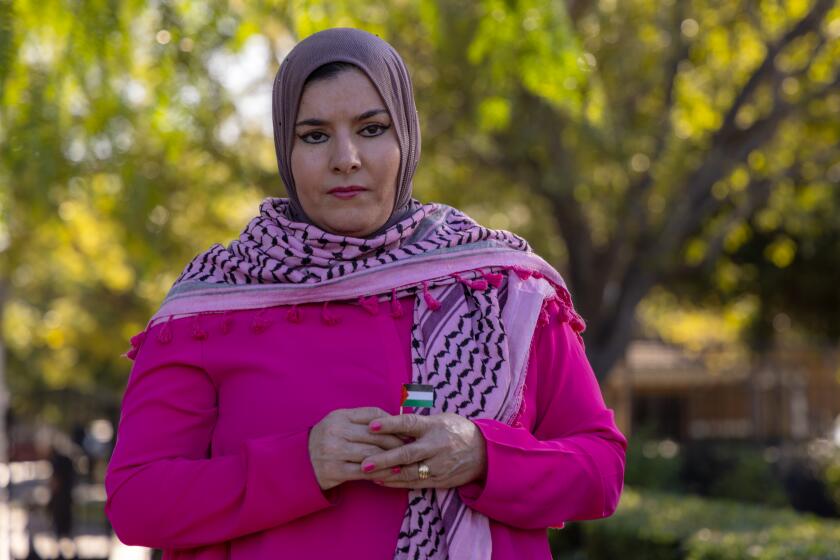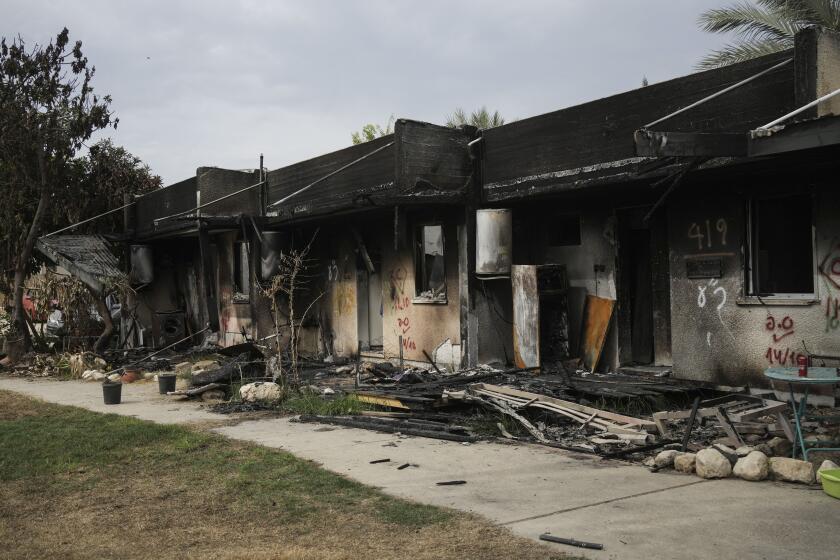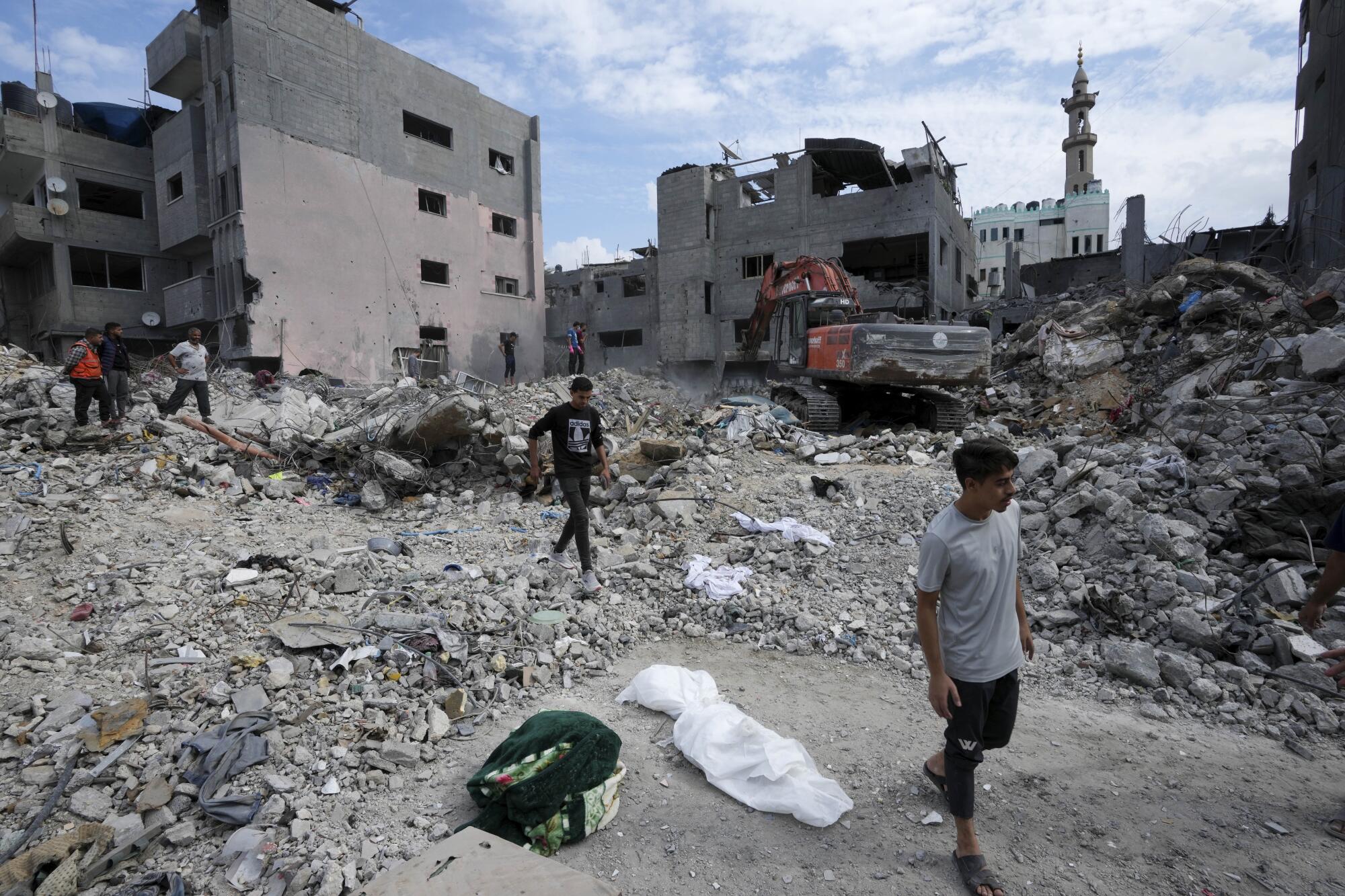
- Share via
DEIR AL BALAH, Gaza Strip — The wreckage goes on for block after devastated block. The smell is sickening. Every day, hundreds of people claw through tons of rubble with shovels and iron bars and their bare hands.
They are looking for the bodies of their children. Their parents. Their neighbors. All of them killed in Israeli missile strikes. The corpses are there, somewhere in the endless acres of destruction.
More than five weeks into Israel’s war against Hamas, some streets are now more like graveyards. Officials in Gaza say they don’t have the equipment, manpower or fuel to search properly for the living, let alone the dead.
Hamas, the militant group behind the deadly Oct. 7 attack that killed about 1,200 people in Israel, has many of its bases within Gaza’s crowded neighborhoods. Israel is targeting those strongholds.
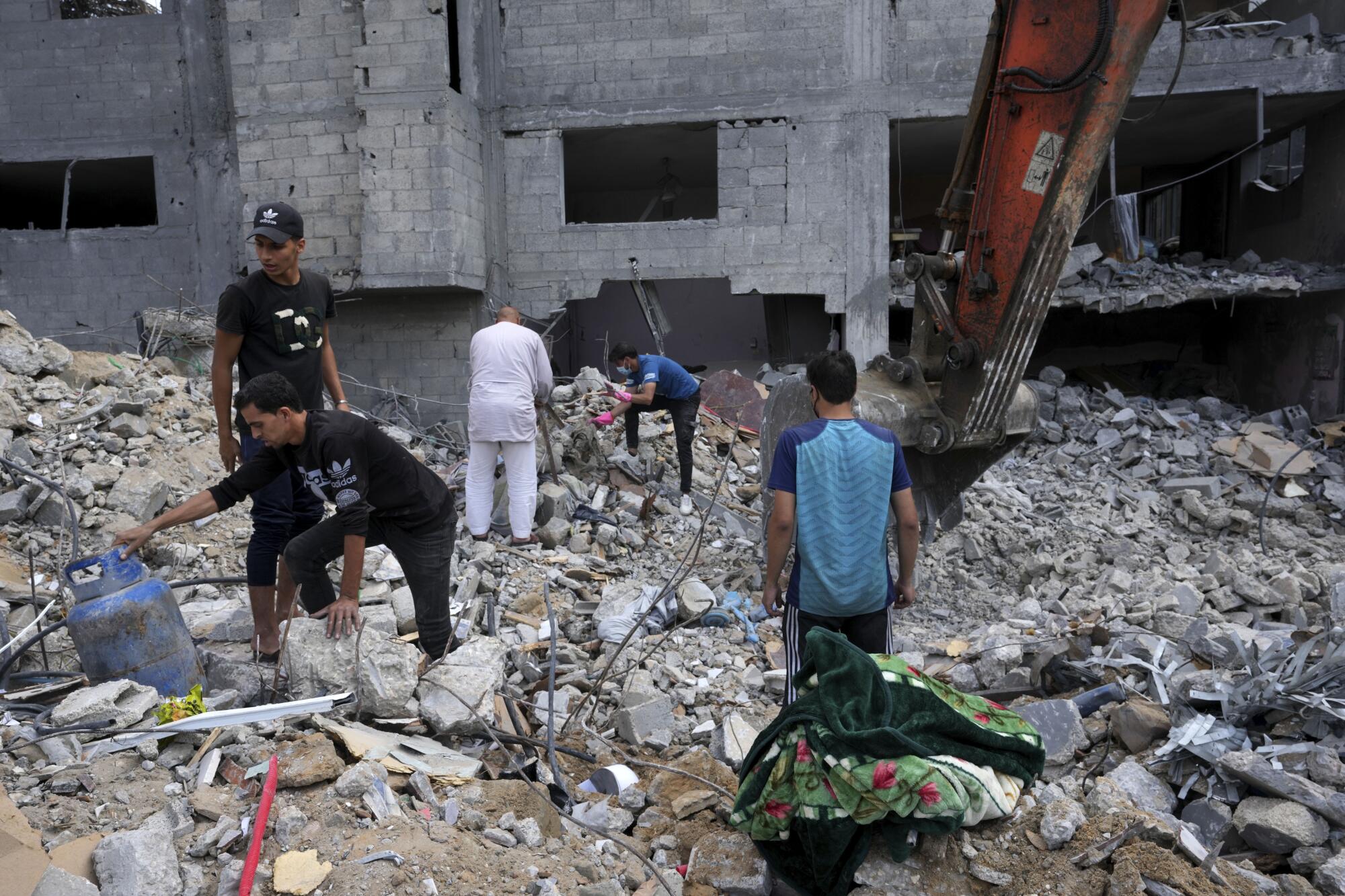
But the victims are often everyday Palestinians, many of whom have yet to be found.
Omar Darawi and his neighbors have spent weeks searching the ruins of a pair of four-story houses in central Gaza. Forty-five people lived in the homes; 32 were killed. In the first days after the attack, 27 bodies were recovered.
A forensic investigator in Tel Aviv works to reassemble remains of victims of Hamas militants, trying to understand the causes of death and the underlying cruelty.
The five still missing were Darawi’s cousins.
They include Amani, a 37-year-old stay-at-home mom who died with her husband and their four children. There’s Aliaa, 28, who was taking care of her aging parents. There’s another Amani, who died with her 14-year-old daughter. Her husband and their five sons survived.
“The situation has become worse every day,” said Darawi, 23, who was once a college journalism student. The smell has become unbearable.
“We can’t stop,” he said. “We just want to find and bury them” before their bodies are lost in the rubble forever.
Israel claims, without providing visual evidence, that Shifa Hospital, Gaza’s largest and best-equipped medical facility, is being used by Hamas.
More than 11,400 Palestinians have been killed, two-thirds of them women and children, according to Palestinian health authorities. The United Nations humanitarian affairs office estimates that about 2,700 people, including 1,500 children, are missing and believed buried in the ruins.
The missing have added layers of pain to Gaza’s families, who are overwhelmingly Muslim. Islam calls for the dead to be buried quickly — within 24 hours if possible — with the shrouded bodies turned to face the holy city of Mecca. Traditionally, the body is washed by family members with soap and scented water, and prayers for forgiveness are said at the gravesite.
The search is particularly difficult in northern Gaza, including Gaza City, where Israeli ground forces are battling Hamas militants. Hundreds of thousands of people have fled southward, terrified by the combat and pushed by Israeli warnings to evacuate. But even in the south, continued Israeli airstrikes and shelling mean nowhere is safe in the tiny territory.
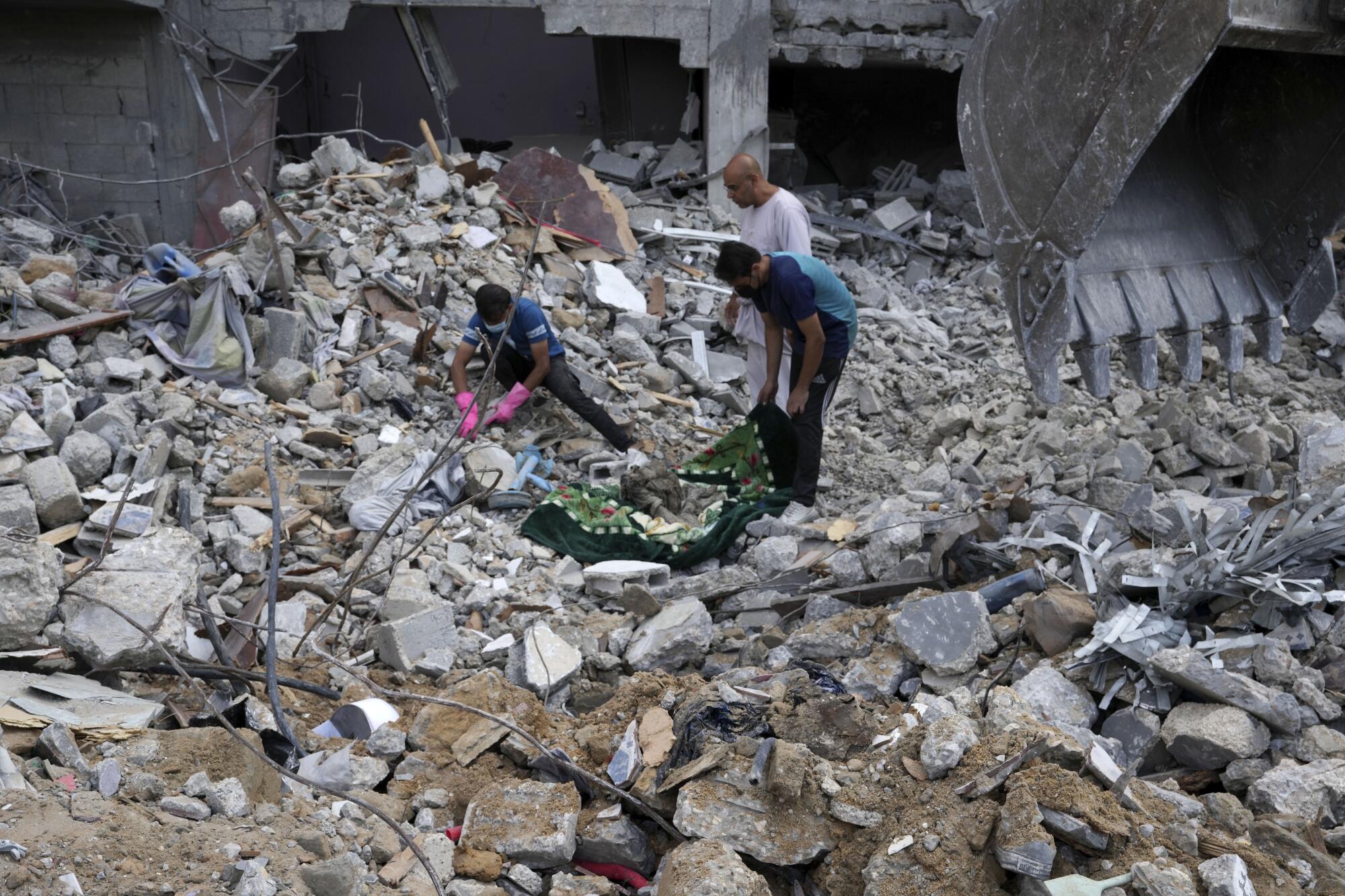
The Palestinian Civil Defense department, Gaza’s primary search-and-rescue force, has had more than two dozen workers killed and more than 100 injured since the war began, said Mahmoud Bassal, the department spokesman.
More than half of its vehicles are now either without fuel or have been damaged by strikes, he said.
In central Gaza, outside the northern combat zone, the area’s civil defense director has no working heavy equipment at all, including bulldozers and cranes.
The Israel-Hamas war has sparked an increase in harassment, but Palestinian Americans also report shows of support for their businesses.
“We actually don’t have fuel to keep the sole bulldozer we have operating,” said Rami Ali Aidei.
At least five large bulldozers are needed just to search a series of collapsed high-rise buildings in the coastal town of Deir al Balah, he said.
This means that bodies, and the desperate people searching for them, are not the focus.
“We’re prioritizing areas where we think we will find survivors,” said Bassal.
Vivian Silver, a Canadian-born Israeli activist who devoted her life to seeking peace with the Palestinians, was thought to have been taken hostage.
As a result, the search for bodies often falls to relatives, or to volunteers like Bilal Abu Sama, a former freelance journalist.
He ticks off a handful of Deir al Balah’s victims: 10 corpses still lost in what is left of the Salam Mosque; two dozen bodies missing in a destroyed home; 10 missing in another mosque attack.
“Will those bodies remain under the rubble until the war ends? OK, when will the war end?” said Abu Sama, 30, describing how families dig through the wreckage without any tools. “The bodies will be decomposed. Many of them have already decomposed.”
On Tuesday, 28 days after an airstrike flattened his home, Izzel-Din Moghari found his cousin’s body.
Start your day right
Sign up for Essential California for the L.A. Times biggest news, features and recommendations in your inbox six days a week.
You may occasionally receive promotional content from the Los Angeles Times.
Twenty-four people from his extended family lived in the home, in the Bureij refugee camp. All but three were killed.
Eight are still missing.
A civil defense bulldozer came three days after the strike to clear the road, then left quickly for another collapsed building. The bulldozer came again Tuesday and helped find Moghari’s cousin.
After finding his cousin, Moghari went back into the wreckage in search of his father and other relatives.
Column: Biden and Blinken are planning for ‘the day after’ war in Gaza ends. Make that years after
President Biden and his aides say they hope to revive the moribund goal of a two-state solution between Israel and the Palestinians. It will be a daunting task.
“I am stunned,” he said. “What we lived through is indescribable.”
Gaza has become a place where many families are denied even the comfort of a funeral.
Darawi, the man searching for his cousins, understands that.
“Those who found their dead are lucky,” he said.
More to Read
Sign up for Essential California
The most important California stories and recommendations in your inbox every morning.
You may occasionally receive promotional content from the Los Angeles Times.
